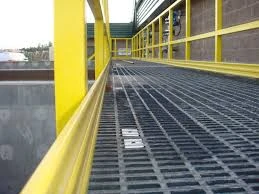
-
 Afrikaans
Afrikaans -
 Albanian
Albanian -
 Amharic
Amharic -
 Arabic
Arabic -
 Armenian
Armenian -
 Azerbaijani
Azerbaijani -
 Basque
Basque -
 Belarusian
Belarusian -
 Bengali
Bengali -
 Bosnian
Bosnian -
 Bulgarian
Bulgarian -
 Catalan
Catalan -
 Cebuano
Cebuano -
 China
China -
 China (Taiwan)
China (Taiwan) -
 Corsican
Corsican -
 Croatian
Croatian -
 Czech
Czech -
 Danish
Danish -
 Dutch
Dutch -
 English
English -
 Esperanto
Esperanto -
 Estonian
Estonian -
 Finnish
Finnish -
 French
French -
 Frisian
Frisian -
 Galician
Galician -
 Georgian
Georgian -
 German
German -
 Greek
Greek -
 Gujarati
Gujarati -
 Haitian Creole
Haitian Creole -
 hausa
hausa -
 hawaiian
hawaiian -
 Hebrew
Hebrew -
 Hindi
Hindi -
 Miao
Miao -
 Hungarian
Hungarian -
 Icelandic
Icelandic -
 igbo
igbo -
 Indonesian
Indonesian -
 irish
irish -
 Italian
Italian -
 Japanese
Japanese -
 Javanese
Javanese -
 Kannada
Kannada -
 kazakh
kazakh -
 Khmer
Khmer -
 Rwandese
Rwandese -
 Korean
Korean -
 Kurdish
Kurdish -
 Kyrgyz
Kyrgyz -
 Lao
Lao -
 Latin
Latin -
 Latvian
Latvian -
 Lithuanian
Lithuanian -
 Luxembourgish
Luxembourgish -
 Macedonian
Macedonian -
 Malgashi
Malgashi -
 Malay
Malay -
 Malayalam
Malayalam -
 Maltese
Maltese -
 Maori
Maori -
 Marathi
Marathi -
 Mongolian
Mongolian -
 Myanmar
Myanmar -
 Nepali
Nepali -
 Norwegian
Norwegian -
 Norwegian
Norwegian -
 Occitan
Occitan -
 Pashto
Pashto -
 Persian
Persian -
 Polish
Polish -
 Portuguese
Portuguese -
 Punjabi
Punjabi -
 Romanian
Romanian -
 Russian
Russian -
 Samoan
Samoan -
 Scottish Gaelic
Scottish Gaelic -
 Serbian
Serbian -
 Sesotho
Sesotho -
 Shona
Shona -
 Sindhi
Sindhi -
 Sinhala
Sinhala -
 Slovak
Slovak -
 Slovenian
Slovenian -
 Somali
Somali -
 Spanish
Spanish -
 Sundanese
Sundanese -
 Swahili
Swahili -
 Swedish
Swedish -
 Tagalog
Tagalog -
 Tajik
Tajik -
 Tamil
Tamil -
 Tatar
Tatar -
 Telugu
Telugu -
 Thai
Thai -
 Turkish
Turkish -
 Turkmen
Turkmen -
 Ukrainian
Ukrainian -
 Urdu
Urdu -
 Uighur
Uighur -
 Uzbek
Uzbek -
 Vietnamese
Vietnamese -
 Welsh
Welsh -
 Bantu
Bantu -
 Yiddish
Yiddish -
 Yoruba
Yoruba -
 Zulu
Zulu
frp desalination pipes and fittings for efficient water treatment
Efficient Water Treatment Using FRP Desalination Pipes and Fittings
Water scarcity is one of the most pressing challenges faced by communities around the world. As the demand for fresh water continues to rise, innovative solutions are vital to ensure sustainable access to clean water. One such solution is the use of Fiber Reinforced Polymer (FRP) desalination pipes and fittings. These advanced materials play a critical role in the efficient treatment of seawater and brackish water, making fresh water readily available.
Understanding FRP and Its Benefits
Fiber Reinforced Polymer (FRP) is a composite material made from a polymer matrix reinforced with fibers, typically glass, carbon, or aramid. This unique combination provides FRP with several advantageous properties, making it an ideal choice for water treatment applications, particularly desalination projects. FRP is known for its lightweight nature, high tensile strength, and resistance to corrosion, which are essential traits in water treatment systems that often come into contact with harsh environments and saline water.
One of the most significant benefits of FRP desalination pipes is their durability. Unlike traditional materials, such as steel or concrete, FRP does not corrode when exposed to seawater, significantly reducing maintenance costs and extending the lifespan of the infrastructure. This characteristic is especially important in desalination plants, where pipes are subject to constant exposure to saltwater, potentially leading to significant deterioration over time.
Enhancing Efficiency in Water Treatment
FRP desalination pipes and fittings can significantly enhance the overall efficiency of water treatment systems. Their smooth internal surfaces reduce friction loss, allowing for higher flow rates and minimizing energy consumption. This results in lower operational costs and increased processing capabilities, which is critical for meeting the growing demand for potable water.
Additionally, FRP materials can be manufactured in a variety of shapes and sizes, offering flexibility in design that allows for easy integration into existing systems
. This adaptability means that engineers can optimize layouts and configurations in desalination plants, further enhancing efficiency and performance.frp desalination pipes and fittings for efficient water treatment

Environmental Impact and Sustainability
The environmental impact of desalination processes has been a contentious issue, particularly concerning energy consumption and the disposal of brine waste. However, the use of FRP can contribute to more sustainable desalination practices. By improving the efficiency of water treatment systems, FRP helps reduce the overall energy demands of the process, leading to lower carbon emissions associated with desalination plants.
Moreover, FRP technology supports the possibility of developing renewable energy-powered desalination systems. With enhanced efficiency, the integration of renewable energy sources, such as solar or wind power, becomes more feasible. This approach aligns with global goals for sustainable development and provides an environmentally friendly method for producing fresh water from seawater.
Cost-Effectiveness
While the initial investment in FRP desalination pipes and fittings may be higher than traditional materials, the long-term cost savings are substantial. The durability and low maintenance requirements of FRP systems result in reduced lifecycle costs. Fewer repairs and replacements mean that organizations can allocate resources towards other critical areas rather than ongoing infrastructure maintenance.
Furthermore, the increased efficiency of FRP systems translates into lower energy costs, making them a financially attractive option for freshwater production. As more regions face serious water shortages, the integration of cost-effective and efficient technologies becomes crucial in addressing these challenges.
Conclusion
In conclusion, FRP desalination pipes and fittings represent a transformative approach to efficient water treatment. Their numerous advantages—durability, efficiency, environmental sustainability, and long-term cost-effectiveness—make them essential components in addressing the global water crisis. As technology continues to advance, harnessing innovative materials like FRP will be crucial in securing a reliable and sustainable source of clean water for future generations. With ongoing research and development, the full potential of FRP in desalination processes will further emerge, positioning it as a cornerstone in the fight against water scarcity.









